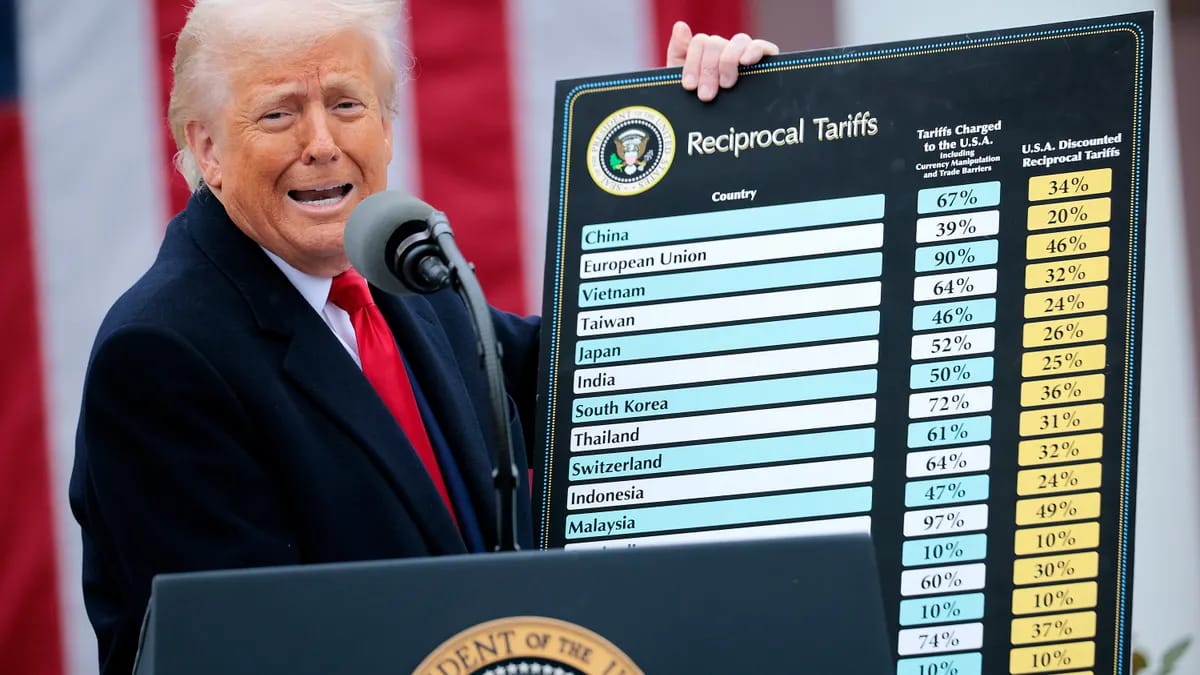- CIOsurge
- Posts
- 🔐 CIOs overspend on security tools they can’t fully use
🔐 CIOs overspend on security tools they can’t fully use
Security Tool Overload, Tariffs Stall IT Spend, New CIOs at Fat Brands and Lamb Weston


Powered by Single Fin
Welcome to this week’s edition of CIOsurge!
This week:
Despite heavy security investments, most orgs suffered breaches in 2024, prompting a shift toward consolidation and value-driven strategies.
New tariffs have caused 40% of CIOs to delay projects, accelerating a pivot toward automation, AI, and vendor flexibility.
Fat Brands and Lamb Weston appoint new CIOs to lead tech-driven growth and streamline operations.
Let’s make this week a game-changer.
Stay sharp. Stay ahead.
🔐 CIOs overspend on security tools they can’t fully use
A new survey shows 88% of organizations suffered a breach last year—even as half of IT leaders admit they’ve overinvested in security tools they don’t fully utilize. Complexity from years of patching together point solutions is now creating more problems than it solves, prompting CIOs to consider consolidated, platform-based security strategies to regain control and value.
We’ve spent a decade stacking point solutions, and the result is a fragmented security ecosystem that’s hard to manage, underutilized, and still not breach-proof. The ROI just isn’t there. It’s not that we’re underinvesting—it’s that we’ve overcomplicated the picture without improving outcomes.
This is a wake-up call. CIOs and CISOs should stop buying for features and start buying for fit—how well a tool integrates, streamlines operations, and gives us clarity. Consolidation doesn’t just cut costs; it can reduce blind spots and empower faster response. The key is owning the complexity before it owns you.
- Zack Tembi
📉 Tariff uncertainty puts CIO spending plans on pause
Following new U.S. tariffs, 40% of CIOs have deferred discretionary IT projects, and nearly two-thirds now prioritize cost management, according to BCG. Although budgets aren’t collapsing, average increases dropped from 4% to 2.4%, with leaders pulling back on mature tech and doubling down on AI, automation, and vendor consolidation to hedge against economic instability.
Uncertainty has always made long-term planning difficult—but the sudden shift in CIO sentiment this April is striking. Just a few months ago, AI and cloud investment plans were full steam ahead. Now we’re in a holding pattern, with leaders preserving runway and selectively advancing high-ROI initiatives.
This environment demands scenario planning. CIOs can’t just cut—they have to reprioritize, push for flexibility in vendor contracts, and invest in automation where it directly offsets new cost pressures. It’s not about waiting out volatility—it’s about adapting roadmaps in real time while preserving momentum in strategic areas.
- Zack Tembi
💬 Zack's Take

📉 Navigating the Hidden Cost Increases in Cloud Contracts
An uncomfortable trend I'm seeing right now is substantial cost increases hidden within cloud enterprise license agreements. Even if companies aren’t adding users or significantly increasing resource usage, vendors are pushing through hikes of around 20% across the board. This unexpected jump creates budgeting nightmares and often forces painful trade-offs in other critical IT investments.
CIOs must proactively prepare for these cost escalations by closely monitoring contracts, usage patterns, and renewal timelines. Being caught unaware by these hikes is preventable—if you're tracking contract expirations and have clear visibility into vendor pricing trends, you can negotiate more favorable terms before the renewal hits.
Start discussions with vendors early and use precise usage data as leverage during negotiations. Building visibility into contract lifecycle management isn’t glamorous, but with budgets tightening and vendor prices rising, it’s essential groundwork for maintaining operational agility.
🗞️ At A Glance

💡 CIO Spotlights
Fat Brands hires Drew Martin as CIO to scale tech solutions
Fat Brands appointed Drew Martin, former CIO at Jack in the Box, to oversee scalable technology implementations as the company expands.
Martin brings 35 years of IT experience, including roles at Sony, PepsiCo, and digital transformation projects at Silicon Beach Advisors.
COO Thayer Wiederhorn highlighted Martin’s expertise in digital innovation to enhance customer experience and operational efficiency.
Lamb Weston names Benjamin Heselton CIO to boost tech innovation
Lamb Weston appointed Benjamin Heselton as CIO to lead the company’s global tech strategy, driving digital innovation across its operations.
Heselton, previously CTO at Wurth IT USA, brings extensive expertise in global IT services and information security.
CEO Mike Smith emphasized Heselton’s practical leadership style as essential to enhancing Lamb Weston’s operational excellence and growth.





Reply